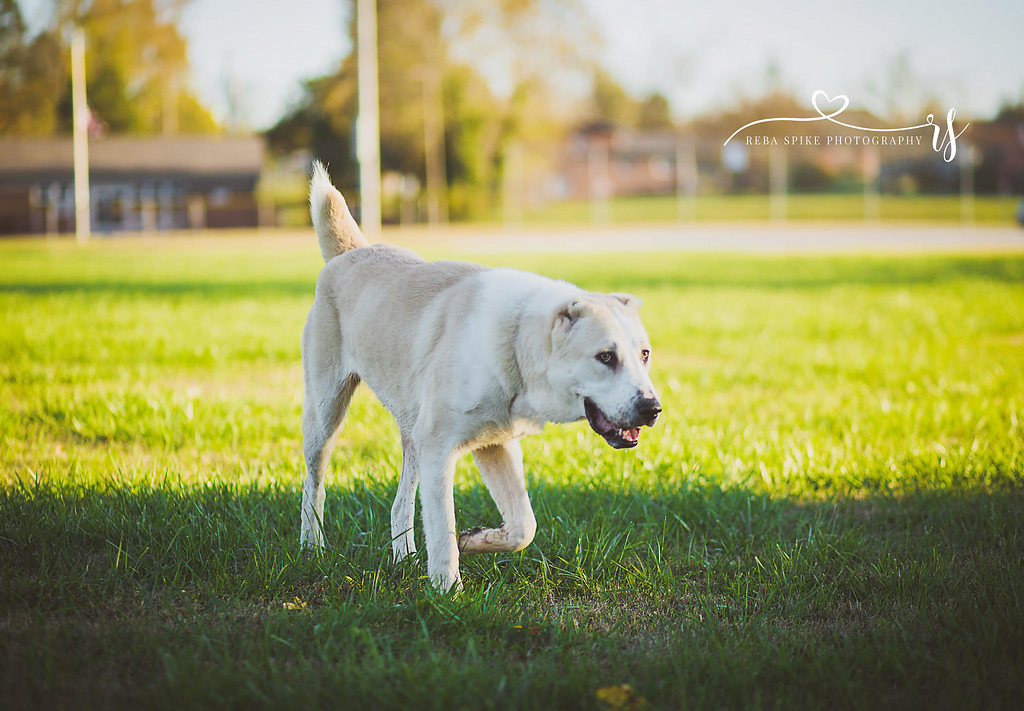The Central Asian Shepherd stands as a testament to resilience, loyalty, and unparalleled guardianship. Originating from the rugged landscapes of Central Asia, this breed has been shaped by centuries of selective breeding, designed to offer protection against predators and intruders alike. Known for their formidable size, strength, and courageous demeanor, Central Asian Shepherds are not just pets but loyal companions and fierce protectors of their families.
Their intelligence and independent nature make them highly trainable, albeit requiring an experienced hand to harness their full potential. As we delve into the world of these majestic canines, we uncover the essence of what makes the Central Asian Shepherd a remarkable choice for those seeking a guardian breed with a rich history and noble characteristics.
Key Takeaways
- The Central Asian Shepherd is a large, powerful dog breed with a rich history, known for its protective instincts and strong loyalty to its family. Understanding its background can help potential owners appreciate its unique qualities.
- Regular health check-ups and a balanced diet are crucial for maintaining the health of a Central Asian Shepherd. Paying attention to their specific health needs can prevent common issues and ensure a long, healthy life.
- Due to their size and protective nature, Central Asian Shepherds require early socialization and consistent training. This ensures they can coexist peacefully with family members and other pets.
- When considering adding a Central Asian Shepherd to your family, it’s important to seek reputable breeders or adoption centers. They can provide valuable insights into the dog’s history, health, and temperament.
- The Central Asian Shepherd thrives in environments where it has space to move and a clear role within its family or pack. Structured activities and a defined living space can help meet its physical and mental needs.
- Finally, understanding the breed’s characteristics and care requirements is essential for anyone considering a Central Asian Shepherd as a pet. This knowledge ensures a harmonious relationship between the dog and its owner.
Breed Overview
History
The Central Asian Shepherd boasts a rich heritage that hails from the expansive terrains of Central Asia. These dogs have served as formidable guard dogs for livestock, a testament to their resilience and strength. Their lineage is steeped in history, stretching back over 4,000 years, making them one of the oldest known dog breeds. In the nomadic cultures of Central Asia, these shepherds were indispensable. They adapted to extreme climates, safeguarding herds and homes alike. This deep-rooted background underlines their significance in ancient societies.
Physical Characteristics
Central Asian Shepherds are powerhouses with a robust and muscular frame designed for protection. Their coat can vary significantly, from short to long lengths, and they showcase a wide color palette including white, black, and brindle. One cannot overlook their striking features: a broad head paired with powerful jaws and a tail that elegantly curls over their back. These physical traits not only contributed to their efficiency as guardians but also add to their majestic appearance.
Personality and Temperament
Loyalty defines the personality of Central Asian Shepherds. They exhibit an unwavering protective instinct towards their family members. Known for their independence, these dogs possess remarkable decision-making capabilities especially in scenarios requiring guard duties. However, their wariness around strangers necessitates proper introductions to prevent potential issues. This temperament stems from their historical role as protectors against predators and threats to livestock.
kara-yulduz.com source
Health And Care
Common Health Issues
Central Asian Shepherds are generally robust dogs. However, hip dysplasia and heart conditions stand out as genetic concerns for the breed. Owners should be vigilant about these issues from an early age.
Obesity emerges as a risk if their diet and exercise regimes falter. A balanced approach to nutrition and physical activity is crucial. Regular veterinary check-ups are essential. They help monitor signs of bloat, a serious threat to large breeds like the Central Asian Shepherd.
Dietary Needs
The dietary needs of a Central Asian Shepherd are paramount for their overall health. A balanced diet that aligns with their size, age, and activity level is non-negotiable. High-quality commercial foods or well-planned raw diets can meet these needs effectively.
Overfeeding poses a significant risk of obesity and subsequent health complications. Thus, portion control is critical in maintaining their ideal weight and preventing related diseases.
Exercise Requirements
Daily exercise is not optional for Central Asian Shepherds; it’s a necessity. Activities like long walks, hikes, and play sessions keep them physically fit and mentally sharp. These activities should occur in a securely fenced area to prevent any mishaps.
However, caution is advised against over-exercising puppies due to their developing joints. Moderation ensures they grow up healthy without undue stress on their bodies.
Grooming
Grooming plays a vital role in the care regimen of Central Asian Shepherds, especially given their seasonal shedding patterns. Regular brushing during these periods keeps their coat manageable and reduces loose hair around the house.
Routine ear cleaning, nail trimming, and dental care ward off common health issues before they start. Fortunately, outside of shedding seasons, their coat maintenance demands are relatively low.
Living with a Central Asian Shepherd
Training and Socialization
Central Asian Shepherds, known for their bold and protective nature, require early socialization. This prevents aggression and shyness as they grow. Introducing them to various people, animals, and environments at a young age is crucial. For these dogs, positive reinforcement techniques work wonders. They do not respond well to harsh treatment due to their sensitivity.
Training them demands consistency and patience. Their independent streak means they might not always follow commands immediately. Owners should prepare for a training journey that builds trust and respect over time.
Environment
These large dogs thrive in homes with ample space. They need large, securely fenced yards where they can roam freely and safely. An apartment setting doesn’t suit them due to their size and high exercise requirements. Central Asian Shepherds adapt well to various climates but have a preference for cooler temperatures. Their thick coat offers protection against cold but may cause discomfort in hot weather. Ensuring they have a shaded area outside during warmer months is essential for their comfort.
Activities They Enjoy
Central Asian Shepherds enjoy activities that challenge both their minds and bodies. Agility or obedience training can be particularly rewarding for them. These activities not only provide physical exercise but also mental stimulation, keeping boredom at bay. Hiking and outdoor adventures are perfect for catering to their exploratory nature. Such outings allow them to expend energy in a positive way while exploring new terrains. Interactive play sessions with their family members strengthen the bond between dog and owner, fostering a deep sense of loyalty and companionship.

Breeder Advice and Adoption
Choosing a Breeder
When looking for a Central Asian Shepherd, selecting a reputable breeder is crucial. These breeders prioritize the health and well-being of their dogs. They conduct thorough health screenings to ensure the puppies are free from genetic diseases common in the breed.
It’s essential to ask for pedigrees and health clearances for both parents. This documentation provides proof of lineage and confirms that the parents are free from inheritable conditions. Such transparency is a hallmark of responsible breeding practices.
Visiting the breeding facility is also recommended. This visit allows potential owners to observe the living conditions firsthand. It offers insights into the care and socialization practices of the breeder. Observing the temperament of not just the puppies but also their parents can give clues about future behavior traits.
Adoption
Adopting a Central Asian Shepherd offers a rewarding alternative to purchasing from a breeder. Breed-specific rescues or shelters sometimes have these majestic dogs waiting for homes. Adopting from these sources not only gives a dog a second chance at life but also contributes to combating pet overpopulation.
Patience is key when looking to adopt. Finding a Central Asian Shepherd through adoption can take time due to their rarity in shelters and rescues. Regularly checking with organizations and expressing interest can help alert you to when one becomes available.
When considering adoption, it’s important to ask about the dog’s history, health, and temperament. Understanding a dog’s background can help prepare for its integration into your home. Questions about previous living situations, medical history, and behavioral tendencies are vital. They provide valuable insights into how well the dog may adapt to living with you, especially if transitioning from living with a Central Asian Shepherd requires specific adjustments.
Misc.
Popular Names
Choosing a name for a Central Asian Shepherd reflects their heritage and strength. Names like Khan, Attila, and Zara are popular choices. They embody power and leadership.
For those inspired by their formidable presence, names such as Bear, Titan, or Luna highlight their physical characteristics. These names capture their robustness and majestic appearance.
Traditional Central Asian names honor the breed’s origins. Names like Azamat (meaning courage) or Aygul (moon flower) connect these dogs to their ancestral roots.
Fun Facts
Central Asian Shepherds played crucial roles in nomadic cultures. They guarded caravans and livestock across vast terrains. This underlines their importance in historical trade routes.
Despite their ancient lineage, major kennel clubs recognized them relatively recently. This fact highlights the breed’s journey from regional guardians to globally acknowledged protectors.
A unique trait of these dogs is their independence in decision-making. They can assess threats and protect their flock without human commands. This intelligence sets them apart from other breeds.
Common Myths
It’s a common misconception that Central Asian Shepherds are inherently aggressive. In reality, proper training and socialization ensure they are gentle giants with families.
Another myth questions their intelligence. However, these dogs exhibit remarkable problem-solving skills. They navigate complex situations with ease.
e believe they are unsuitable for family life due to their size and strength. Yet, their loyalty and protective nature make them excellent companions when raised correctly.
Most Similar Breed
The Tibetan Mastiff shares many traits with the Central Asian Shepherd. Both breeds possess impressive physicality and a deep sense of loyalty.
However, differences lie in their historical uses and adaptations to environments. The Tibetan Mastiff was more isolated, guarding monasteries and homes in the Himalayas.
Both breeds share strong protective instincts but require experienced handling to thrive as family pets or guardians.
Top Dog Grooming Tools (Click Here)
Closing Thoughts
The Central Asian Shepherd emerges as a remarkable breed, combining resilience, loyalty, and protective instincts. This article has explored their characteristics, health care needs, living conditions, and guidelines for adoption and purchasing from breeders. Their robustness and adaptability make them suitable for various roles, from guardians to loyal family companions. However, potential owners must consider the commitment required to meet their exercise, training, and socialization needs.
It’s essential for interested individuals to conduct thorough research and seek reputable breeders or adoption services. By ensuring a responsible approach to ownership, one can provide a nurturing environment for these majestic dogs. The journey with a Central Asian Shepherd offers rewarding experiences, fostering a deep bond between the dog and its owner. For those ready to embrace the challenges and joys of raising these dogs, the effort is undoubtedly worthwhile.
Frequently Asked Questions
What is the average lifespan of a Central Asian Shepherd?
The average lifespan of a Central Asian Shepherd is 12 to 15 years. Proper care and regular veterinary check-ups can contribute to reaching their full lifespan potential.
How much exercise does a Central Asian Shepherd need?
Central Asian Shepherds require moderate to high levels of exercise. Daily activities such as long walks, play sessions, or working tasks are essential for their physical and mental well-being.
Are Central Asian Shepherds good with children?
Central Asian Shepherds can be good with children if properly socialized from an early age. They are protective and loyal, making them suitable companions under supervised interactions.
What are common health issues in Central Asian Shepherds?
Common health issues include hip dysplasia, obesity, and heart problems. Regular veterinary visits and a balanced diet can help manage and prevent these conditions.
How do I find a reputable Central Asian Shepherd breeder?
Look for breeders who perform genetic testing on their breeding stock, offer health guarantees, and allow you to visit their premises. Reputable breeders will prioritize the health and temperament of their puppies over profit.
Can Central Asian Shepherds adapt to living in an apartment?
While they can adapt to apartment living with sufficient daily exercise, Central Asian Shepherds thrive best in homes with large yards where they can roam freely due to their size and energy levels.
Is the Central Asian Shepherd easy to train?
Central Asian Shepherds are intelligent but may exhibit independence, making training a challenge for inexperienced owners. Consistency, patience, and positive reinforcement techniques are key to successful training.








0 Comments